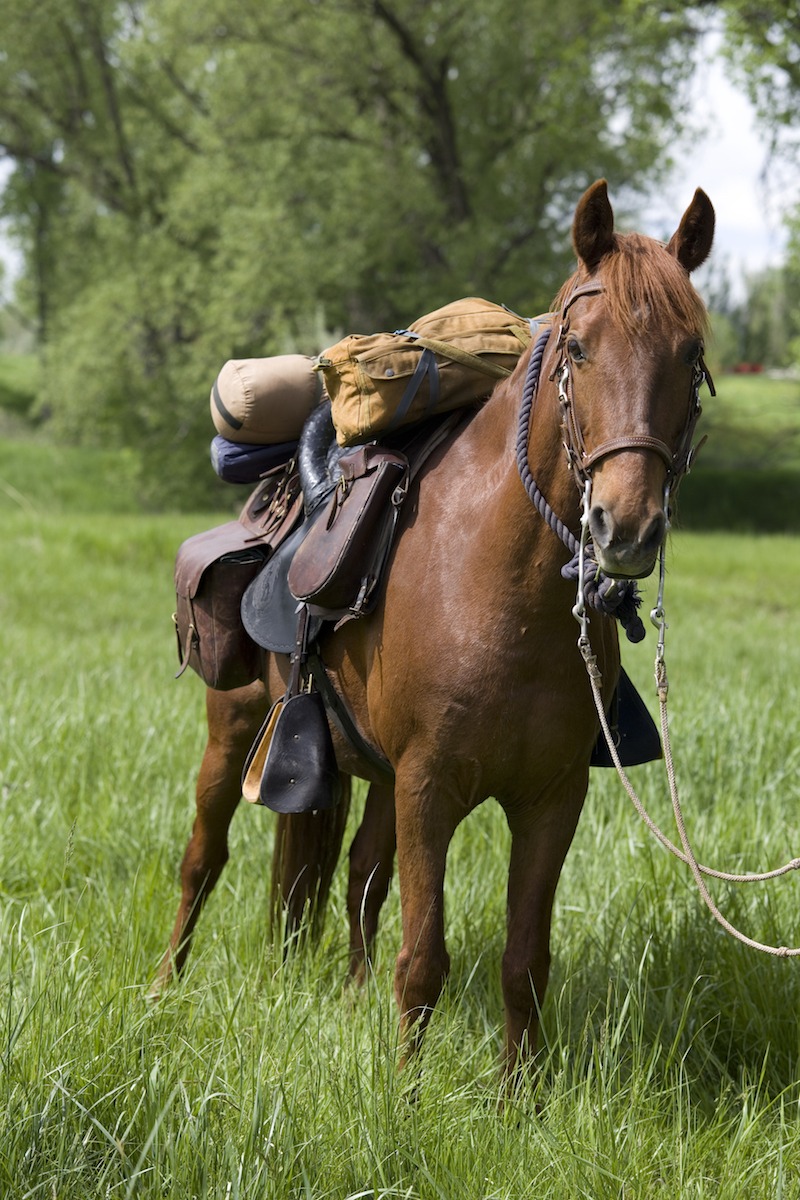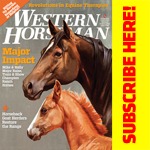Use these savvy but simple tips to head into the wild for a solo camping adventure with your horse.
At age 12, Andy Dean wanted a new adventure. He found what he was looking for in the July 1980 issue of Western Horseman, in an article titled “Pack It In,” by Sam Dack, who wrote about going camping alone in the backcountry, packing everything in on your horse. Dean studied the article, made his gear list, meticulously weighed it and practiced packing it. Already an experienced camper and rider, Dean convinced his parents to let him try going out on his own.
His dad hauled him and his horse to Lory State Park in the foothills west of their home in LaPorte, Colorado, and left him to camp overnight and ride the 10 miles home.
Now, nearly 40 years later, Andrew “Andy” Dean, DVM, still takes solo camping rides whenever he can take time away from his equine veterinary practice and farrier work. He’s kept that old article for its timeless advice but now he can add his own experience to it for today’s adventure-seeking horseman or -woman.

Dean regularly takes a packhorse on longer group and hunting trips, but some of his favorite mountain getaways involve riding out alone to camp and look for a great fly-fishing spot. Going on an overnight camping trip with your horse is simple with the right planning, he says, especially for anyone familiar with camping and backcountry riding. Here are some of Dean’s tips and a peek at his typical camp setup.
Preparation
Dean finds routes in a number of ways—through the advice of other horsemen, Internet searches, and government offices, such as national and state parks services or forestry offices. Find out if you need a permit to access an area or reservations for camping spots.
Once you select your route, make sure your horse is ready for it, from conditioning to understanding a highline or picket, or being without other horses.
“Work on all the things you’ll ask your horse to do beforehand,” Dean says, “including how it reacts to a lot of gear hanging off your saddle.”
Dean usually drives in and parks his truck and trailer, and picks a circular route that will bring him back to it. He has also arranged to have someone drop him off and then park his truck and trailer at the end of his route. He often hides a set of keys near his rig, and takes a second set with him.
“I always leave my planned agenda with my wife, so she knows when to expect me,” he says. “Sometimes I leave in an extra day, in case I want to stay longer to fish.”

Remember to use good camping practices, he adds, such as leaving no trace, packing out trash, and using tree-saver straps for your highline to protect the tree bark.
Packing
For solo horse packing, Dean finds a lot of gear at outdoor camping stores because it tends to be strong and lightweight.
“Because you are packing everything on your horse, you have to keep your gear light and compact,” Dean says. The rule of thumb is that a horse shouldn’t carry more than 30 percent of its own weight, including rider and gear. Dean makes a list of everything he needs or wants to take, then uses a small fishing scale to weigh his packed equipment.
“You want your packed gear to sit across the horse without sticking out too far, and you want it tight,” Dean says. “You have to be able to actually swing your leg over your gear. I often see people with huge, bulky packs, and they can barely get on and off their horse.”
On solo packing trips, he leaves his yellow slicker and chaps at home, and takes a lightweight raincoat and rain pants instead. Gear such as a rain tarp or bedroll/ sleeping bag should be rolled tightly and at a uniform length.
“I keep the majority of the weight in the front, so it’s on the horse’s shoulders and off its back,” he says. “Heavier items, like any grain or my highline gear, I pack up front.”
Packers take scales to weigh packs on long trips. On short solo camping trips, Dean doesn’t pack in scales; instead, he says, “I weigh everything to start with and then do my best to keep it all balanced as I go.”
The weight should be evenly distributed on both sides of your horse. Dean uses water canteens to help keep weight balanced.
There’s one thing Dean likes to leave off his gear list if he can: his cell phone.
“The idea is to get away!” he says. “Solo camping is a great way to get out into new country and explore with your horse, without being wiped out from hiking it.”
This article was originally published in the February 2017 issue of Western Horseman.





3 Comments
Thank you for sharing your experiences I take frequent horse packing trips into the Utah mountains and enjoy other horseman’s experiences and pictures you are amazing thank you.
Good advice, I been riding the Back Country for 60 years and a member of BCHW since 1983, and I still dont know it all.
Keep up the good work, I’ve packed for 10 days no pack horse, it takes planning.